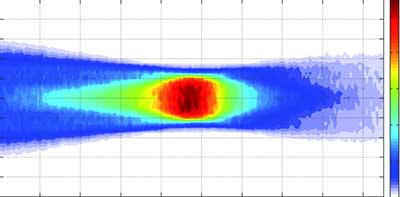Method to focus an X-ray beam for potentially more efficient radiation therapy

External beam radiotherapy is a technique commonly used for the treatment of tumours. The most widely used particles for radiotherapy are protons, electrons and X-rays. An important physical quantity used to describe the effects induced by a radiation beam is the absorbed dose, which represents the mean energy imparted to matter per unit mass. The dose distribution inside the patient is of fundamental importance to assess the effectiveness of the treatment. Indeed, the aim of any radiotherapy treatment is to cause as much damage as possible to cancer cells while harming only a few of the healthy ones.
With the aim of reducing the damage to healthy tissues, increasingly sophisticated beam techniques have been developed, e.g. three-dimensional conformal radiation therapy, intensity-modulated radiation therapy, stereotactic radiation therapy and tomotherapy.
A device capable of focusing a photon beam towards a target volume could pave the way to an innovative radiotherapy methodology, and a group of scientists using an optical component to meet this goal have demonstrated how this might be achieved using a Laue lens [Paternò et al. (2016), J. Appl. Crystallogr. 49, 468-478; doi:10.1107/S1600576716000716].
A Laue lens is an optical component composed of a set of crystals that produce a convergent beam exploiting X-ray diffraction in transmission geometry. Employment of a system formed by a properly designed Laue lens coupled with an X-ray unit to selectively irradiate tumours is proposed by the scientists. A convergent beam leads to a depth dose profile with a pronounced peak at the focal depth, which may result in a high precision of the dose delivery. The scientists carried out a design study to determine the geometry and the optimal features of the crystals composing the lens. The resulting instrumentation and experimental techniques constitute a system suitable for irradiating both sub-cm and larger tumour masses efficiently. A dose of 2Gy can be delivered to a small tumour in a few seconds, sparing at the same time the surrounding tissues.

